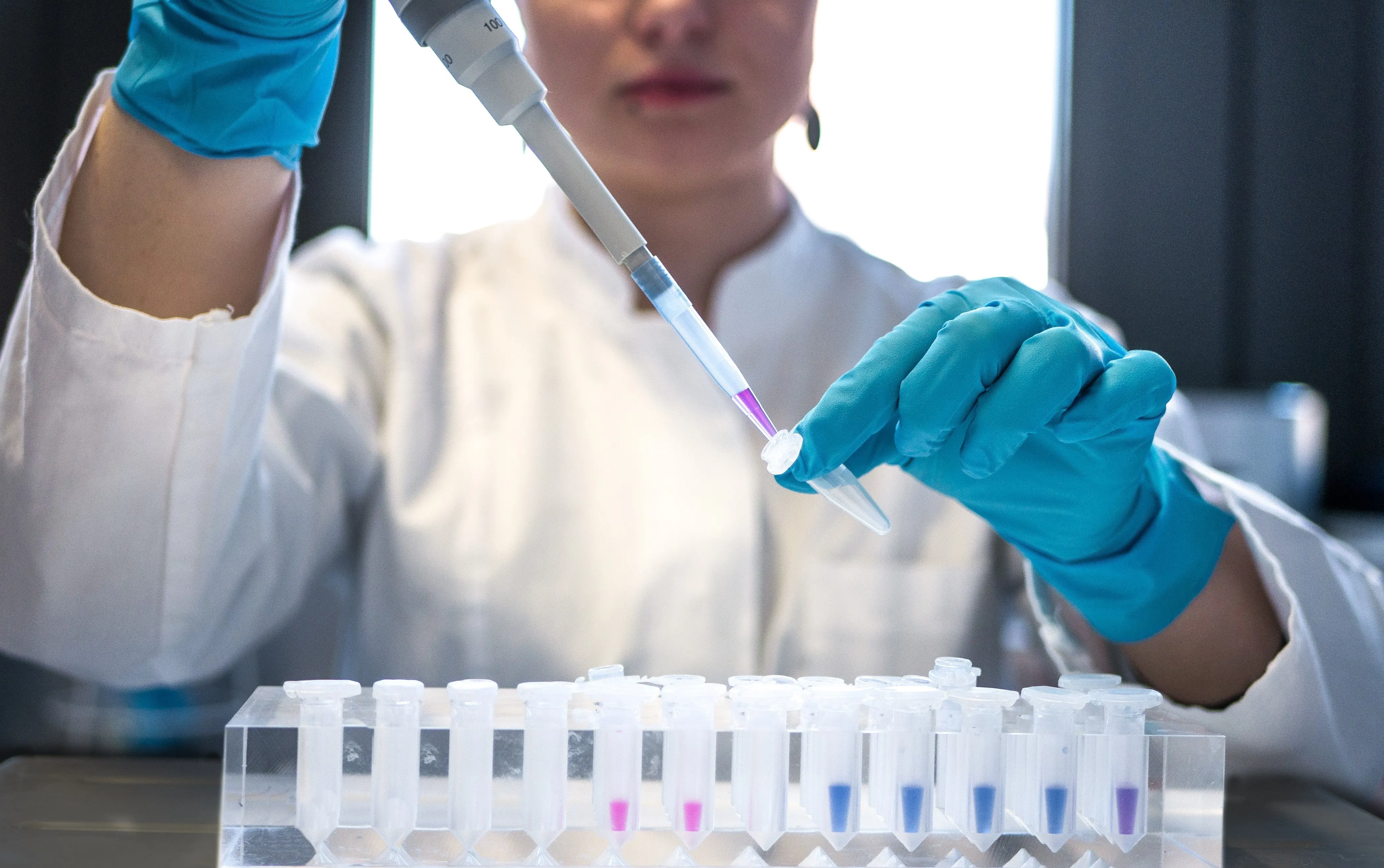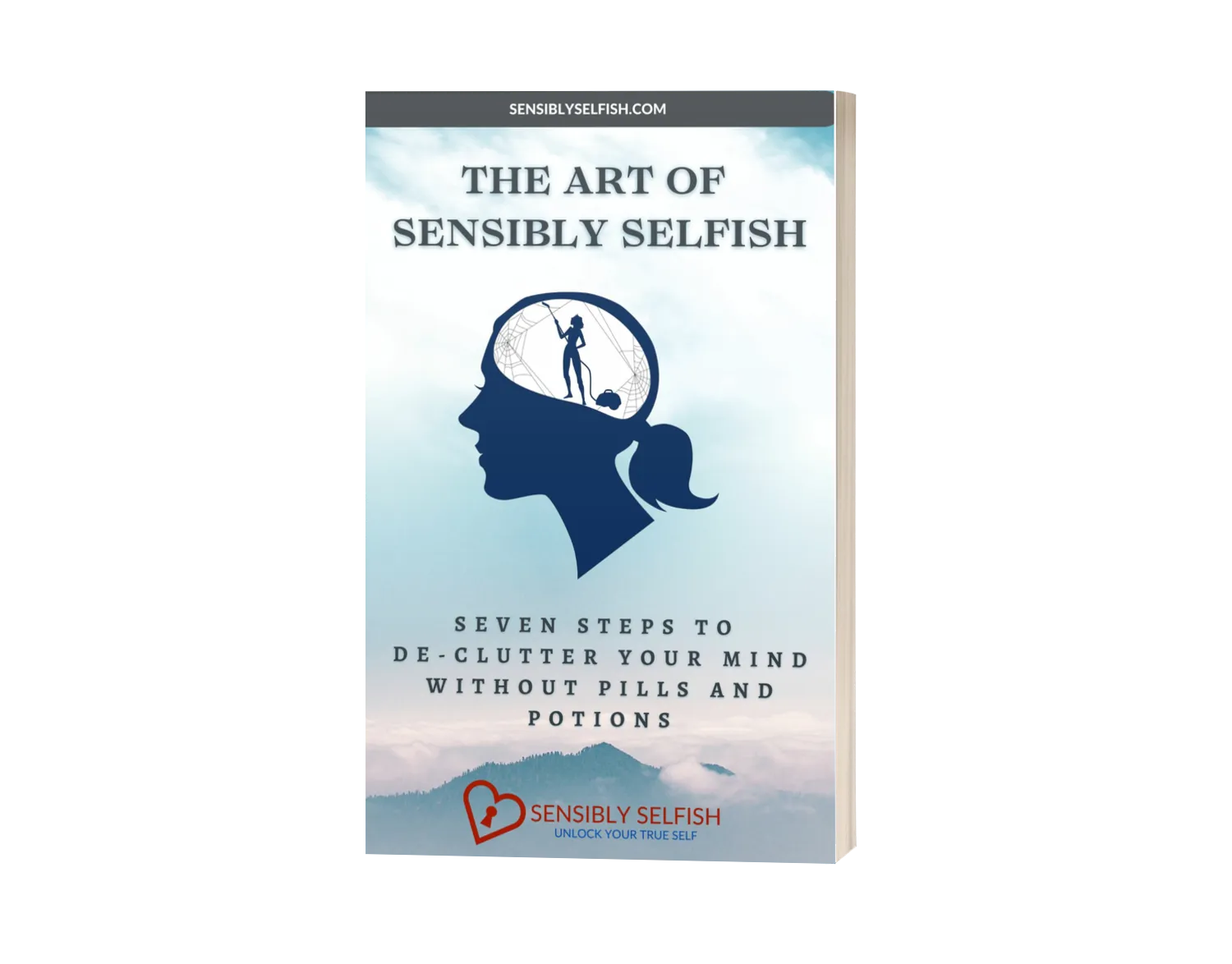The Muffin Top Dilemma
Navigating the Menopause Journey
[Toc]
What to Believe
In a world filled with conflicting information and ever-changing health trends, it's becoming increasingly difficult to discern what is truly beneficial for our well-being. From dietary fads to beauty regimens, we are bombarded with advice that often contradicts itself.
However, one crucial aspect that is rarely discussed is the presence of toxins and chemicals in our everyday lives. This post delves into the issues of menopause today, our body burden, specifically the accumulation of synthetic chemicals in our bodies, with a focus on the detrimental effects of plastic pollution.
A Personal Journey
Let me introduce myself. Raised in a working-class family in Yorkshire, I embarked on an adventure that took me from the UK to Mallorca, Spain, where I established my own cleaning company catering to the wealthy and famous. In my quest for efficient cleaning solutions, I experimented with numerous chemicals readily available on store shelves.
However, this endeavor came at a cost - I developed asthma. Determined to find a healthier alternative, I delved into organic cleaning methods, eventually authoring a book on the subject.

Unveiling the Plastic Body Burden
In April 2021, I joined eXXpedition, an all-female project dedicated to investigating the effects of plastic pollution on both the oceans and our bodies. This eye-opening experience shed light on the dire state of our health and the planet as a whole.
A critical concept that emerged from this exploration was the notion of body burden - the accumulation of synthetic chemicals stored in our bodies at detectable levels. This complex phenomenon encompasses both naturally occurring and man-made chemicals, some of which can persist in our bodies for many years, even after exposure has ceased.
Understanding the Complexity
The level of an individual's body burden is influenced by various factors, including age, gender, disease status, nutritional habits, and genetic makeup. Chemical exposure can occur through inhalation, ingestion of contaminated food or water, and, in some cases, absorption through the skin. While certain chemicals are swiftly eliminated from our bodies, continuous exposure can lead to the development of a persistent body burden. For instance, chlorinated pesticides like DDT can remain in the body for up to 50 years.
Revealing the Hidden Dangers
Body burden testing serves as a valuable tool for assessing an individual's unique chemical load and identifying the specific types of chemicals we encounter daily. These toxins can accumulate in various bodily tissues, including fat, semen, muscle, bone, brain tissue, blood, and organs. The ramifications of this toxic burden are far-reaching, with potential implications for our overall health. Understanding the extent of our exposure can empower us to make informed decisions about reducing our chemical intake and mitigating potential risks.

Shanna Swan
Swan is an epidemiologist, whose primary concern is how to raise awareness among a still largely unaware world about the threat posed by EDCs. has dedicated her career to studying the effects of endocrine-disrupting chemicals (EDCs) on human health. She has focused on the mystery of declining sperm counts observed worldwide since the late 1930s, which she believes can be attributed to EDCs found in everyday products like plastics, pesticides, and packaging.
EDCs, which interfere with the body's hormones, have been detected in various bodily fluids and tissues, including breast milk, placental tissue, urine, blood, and seminal fluid. Swan emphasizes that these chemicals not only affect fertility and sperm counts but also have broader implications for human health, such as disrupting thyroid function, triggering cancer, and contributing to obesity.
Swan advocates for changes in cooking, eating, production, and packaging methods, as well as a reevaluation of industrial processes, to address this potential threat to humanity before it escalates.
The Menopause Connection
In a world grappling with rising obesity rates and metabolic disorders, there is a growing realization that the factors contributing to these health issues extend beyond mere diet and exercise. The potential link between chemical exposure and menopause needs more investigation.
Traditionally, weight gain during menopause (the muffin top dilemma) has been attributed solely to dietary changes and hormonal shifts. However, emerging evidence suggests that environmental factors, including the presence of endocrine-disrupting chemicals found in plastics, may contribute to weight gain and metabolic disturbances. Exploring this connection further is crucial for understanding the multifaceted factors influencing menopause-related health issues.
Obesogens and endocrine disruptors are two categories of chemicals that have garnered attention for their potential role in disrupting metabolic, hormonal, and developmental processes. From plastic manufacturing compounds to contraceptive pills, these substances have infiltrated our daily lives, raising concerns about their impact on human health.

Obesogens - Stealth Contributors to Obesity
Obesogens are a class of chemicals that directly or indirectly contribute to obesity by interfering with metabolic, hormonal, or developmental processes within the body. Among the notable obesogens are bisphenol A (BPA) and phthalates, both commonly used in the production of plastics. These substances have been linked to weight gain, metabolic disturbances, and an increased risk of obesity-related health conditions.
Obesogens can be found in everyday products, from plastic containers to household cleaning agents, and can be ingested through contaminated food and water. The alarming aspect of obesogens is their ability to interfere with hormonal signaling leading to altered fat cell development, increased appetite, and a slowed metabolism.
Research on obesogens has brought to light the unfortunate reality that their impact on our bodies may extend far beyond our own generation. Studies indicate that prenatal exposure to these chemicals can predispose unborn children to obesity later in life. Furthermore, early-life exposure may alter gene expression, leading to an increased likelihood of obesity and related health problems in adulthood.
Endocrine Disruptors - The Hidden Impact on Health
Endocrine disruptors are chemicals that have the ability to interfere with the endocrine system, a complex network of glands responsible for regulating various bodily functions. These substances can mimic or block the actions of natural hormones.
Examples of endocrine disruptors include the contraceptive pill and soy milk, which have been found to influence hormonal processes and potentially contribute to the development of health issues such as cancerous tumors and birth defects.
Disruption of this system can have far-reaching consequences, ranging from hormonal imbalances to reproductive and developmental disorders.
Persistent Organic Pollutants (POPs): The Global Menace
Persistent organic pollutants (POPs) are toxic chemicals that pose significant threats to human health and the environment worldwide. These substances, transported through air and water, can persist in the environment for extended periods and accumulate in living organisms, including humans, through the food chain.
POPs have been linked to a range of health problems, including metabolic disorders, developmental issues, and reproductive abnormalities. Their ability to transcend national borders emphasizes the need for global cooperation in addressing this pervasive challenge.

The Impact on Body Fat Distribution
Understanding the influence of these chemicals on body fat distribution is crucial in unravelling their role in obesity-related health conditions. Subcutaneous adipose tissue (SAT), found throughout the body, and visceral adipose tissue (VAT), surrounding the organs, play distinct roles in metabolic health.
Pre-menopausal women tend to have higher SAT areas, while post-menopausal women experience an increased accumulation of both SAT and VAT, primarily in the abdominal region. Hormonal changes associated with menopause contribute to this shift, highlighting the intricate interplay between chemicals, hormones, and body fat distribution.
Toxicity and Health Implications
It is widely believed that excess body fat is primarily caused by overeating, lack of exercise, and poor sleep. However, the emerging connection between chemical toxicity and obesity necessitates a broader perspective. Numerous studies have started to link chemical exposure to obesity-related health issues.
Abdominal fat, in particular, is known to release toxic substances that can lead to increased blood pressure, inflammation, insulin resistance, and ultimately, conditions like diabetes. Acknowledging the role of toxicity alongside other factors is crucial for comprehensive approaches to tackling obesity and metabolic disorders.
The Alarming Presence of Chemicals in Our Bodies
Joining the eXXpedition project provided a unique opportunity to witness the presence of chemicals firsthand. During one voyage, crew members, ranging from ages 20 to 60, underwent blood testing for various chemicals. The results highlighted the higher levels of fluorinated compounds in younger participants, possibly due to the prevalence of these relatively new chemicals in our lifetime.

Unveiling the Hidden Dangers
The pervasive presence of chemicals in our daily lives and their potentially detrimental effects on our health. From brain fog to weight gain, and from early menopause to autoimmune diseases, a wide range of symptoms have been linked to exposure to these chemicals. It's time to shine a light on this issue and explore the hidden dangers that may lurk in our surroundings.
Some of the most concerning chemicals are known as the "Dirty Dozen." These include BHA, BHT, coal tar dyes, DEA, MEA, TEA, dibutyl phthalate, formaldehyde, parabens, PEG compounds, parfum (fragrance), petrolatum, siloxanes, sodium laureth sulfate, triclosan. These substances have been associated with various health issues and are commonly found in everyday products such as cosmetics, cleaning supplies, and personal care items.
Research conducted by Amber Cooper, an assistant professor of obstetrics and gynaecology at the Washington University School of Medicine, sheds light on the impact of chemicals on women's health. In a study involving 1,442 menopausal women, Cooper identified 12 chemicals strongly linked to diminished ovarian function and earlier onset of menopause.
The alarming fact is that these chemicals, unlike familiar food additives listed as E numbers, often remain unknown and unpronounceable on product labels. Although not scientifically correct a simple rule to remember when buying products is, "If you can't say it, don't pay for it." Then go home and do your due diligence.
Common Household Sources
1. Consumer Products
Many household products contain endocrine disruptors, including cosmetics, personal care products, cleaning agents, and plastics. Ingredients such as phthalates, parabens, bisphenol A (BPA), and triclosan are commonly used in these products and have been linked to endocrine disruption.
2. Food and Agriculture
Pesticides, herbicides, and fungicides used in conventional agriculture can contain endocrine-disrupting chemicals. These chemicals can find their way into the food we consume, especially in non-organic produce, as well as through contaminated water sources for livestock. Additionally, certain additives and packaging materials used in food processing and storage can also contain endocrine disruptors.
3. Environmental Contamination
Endocrine disruptors can enter the environment through various means, such as industrial pollution, air and water pollution, and waste disposal. Industrial chemicals, including polychlorinated biphenyls (PCBs), dioxins, and certain flame retardants, have been identified as endocrine disruptors and can contaminate the air, water, and soil.

Personal care products we use on a daily basis
Consider the shampoo you reach for in the shower. One might assume that a locally made, environmentally friendly product with eco-labels would be safe. However, upon scrutinizing the ingredients, I discovered a chemical called Cocamine DEA. While it may sound innocuous, diethanolamine (DEA) is added to this compound. The International Agency for Research on Cancer (IARC) classifies coconut oil diethanolamine condensate (cocamide DEA) as a possible carcinogen to humans. Shockingly, this substance is FDA approved and can be found in products we use regularly.
The prevalence of plastic in our modern world is alarming. Plastic, a synthetic material that does not degrade, accumulates in our environment, with only a small fraction being recycled. The remaining plastic is incinerated, leading to the release of toxic substances into the air, or ends up in landfills and oceans, posing a threat to both human health and the planet's well-being. Minimizing plastic consumption and opting for sustainable alternatives is crucial for our own well-being and that of future generations.
Beyond plastics, pesticides, herbicides, and fungicides are ubiquitous, contaminating our food and the environment. Choosing organic food and reducing our consumption of meat and over-farmed crops can help mitigate our exposure to these harmful chemicals while also contributing to the preservation of our planet.
While women may be disproportionately affected by chemicals due to the use of beauty products, further research is needed to confirm this claim. However, it is evident that personal products, including moisturizers and cosmetics, often contain a myriad of chemicals. Shifting to products with natural ingredients can reduce our exposure and promote a healthier lifestyle.
Cleaning products are another area of concern. Many commercial cleaning products contain numerous chemicals that can be harmful to both our health and the environment. Simple, natural alternatives like white vinegar, Castile soap, and bicarbonate of soda can be equally effective and safer to use.

Be Aware
As we navigate a world inundated with conflicting health information, it is vital to shed more light on the hidden dangers posed by synthetic chemicals. The issue of body burden, particularly in relation to plastic pollution, demands our attention and action. By raising awareness and advocating for safer alternatives, we can mitigate the harmful effects of chemical exposure on both our bodies and the environment.
If you would like to discuss this topic further or need help to combat the Muffin Top Dilemma, please reach out using the contact button below.
A final word from Swan “You and I, and everyone on this planet, are really serving as guinea pigs,” she says. “And nobody asked us.”










